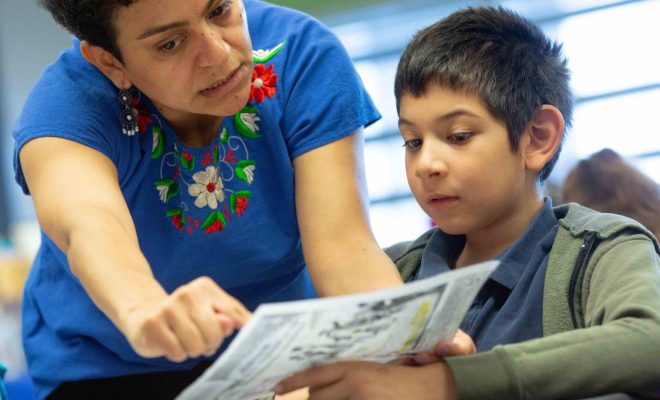Read-Aloud Strategies for Grades 4 and Up

Read-aloud strategies are an essential tool for enhancing reading skills and fostering a love for literature in students of all ages. When it comes to grades 4 and up, using the right strategies becomes even more important as students are introduced to complex texts and advanced concepts. Here are some effective read-aloud strategies specifically designed for grades 4 and up:
1. Pre-reading Activities: Begin by introducing the book’s title, cover, and illustrations. Engage students in a discussion about their predictions and thoughts about the story. This helps activate prior knowledge and prepares students for the text.
2. Modeling Fluency: As the teacher, read the text with expressive and fluent prosody. Demonstrate proper use of punctuation, intonation, and phrasing. Encourage students to use the same techniques when reading aloud.
3. Think Aloud: Pause periodically while reading and share your thoughts and insights about the text. This helps students develop critical thinking skills as they learn to interpret and analyze the story.
4. Visualizing: Encourage students to create mental images of the events, characters, and settings described in the text. Ask reflective questions that prompt students to visualize and imagine the story in their minds.
5. Stop and Predict: Pause at strategic points in the text and ask students to make predictions about what might happen next. This keeps students engaged and promotes active participation in the reading process.
6. Questioning: Pose open-ended questions that require students to think beyond the literal meaning of the text. Encourage students to ask their own questions as well. This helps develop comprehension skills and encourages deeper thinking.
7. Vocabulary Exploration: Introduce new vocabulary words in the text and provide explanations and context to enhance understanding. Engage students in discussions about word meanings and encourage them to use the new words in their own writing.
8. Reader Response: Provide opportunities for students to share their thoughts, reactions, and connections to the story. This can be done through discussions, journaling, or small group activities.
9. Reflective Listening: After reading, ask students to reflect on what they have heard. Encourage them to share their favorite parts, challenges, or unanswered questions. This promotes active listening and reflection.
10. Reading with Expression: Encourage students to read aloud individually or in groups. Emphasize the importance of expression, tone, and pacing. Provide feedback and opportunities for improvement.
Using these read-aloud strategies, teachers can create an engaging and interactive learning experience for students in grades 4 and up. By promoting active participation, critical thinking, and comprehension skills, students can develop strong reading skills and a lifelong love for literature.





